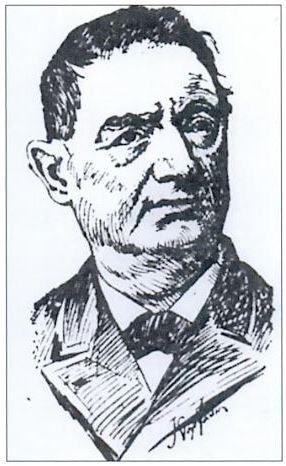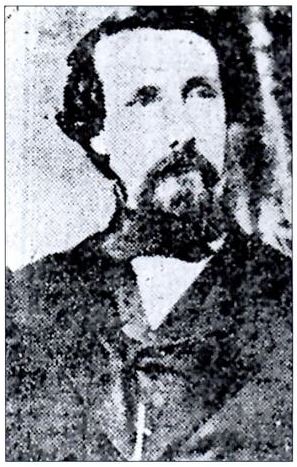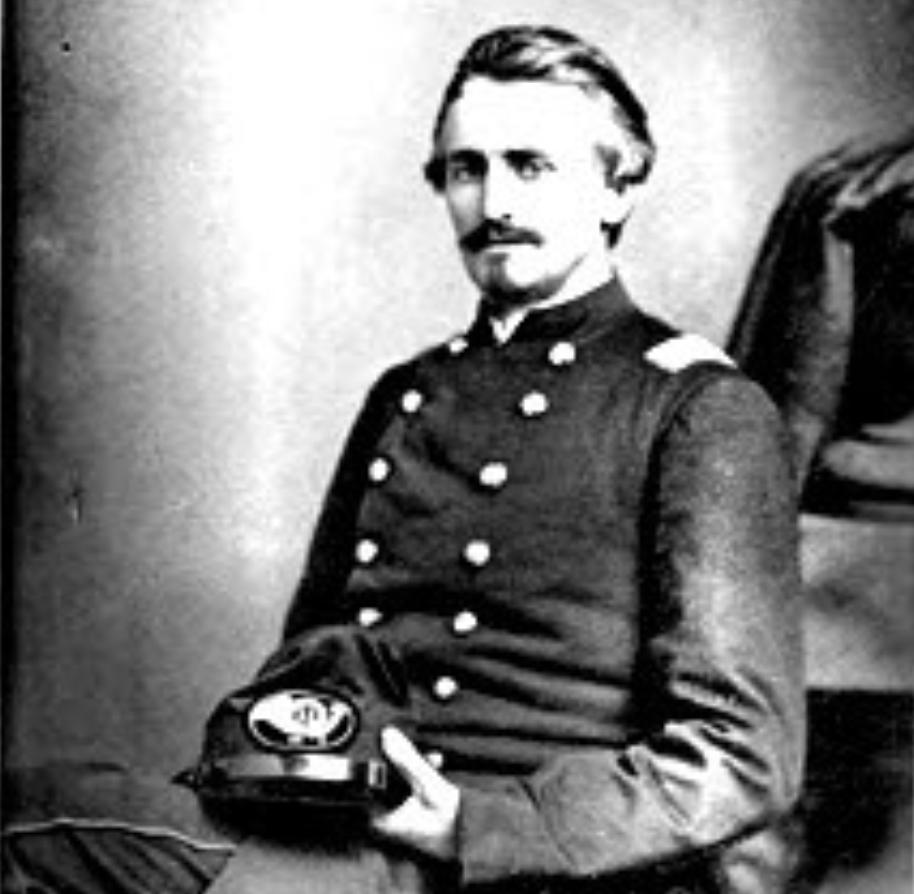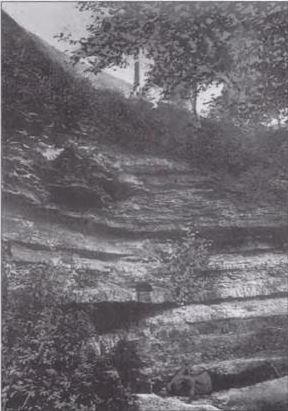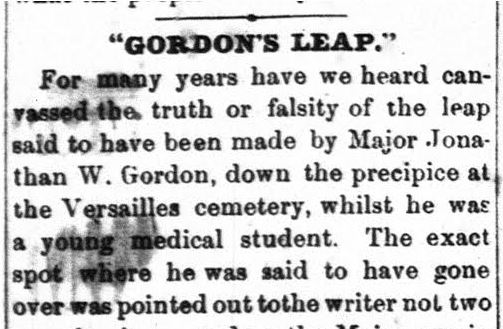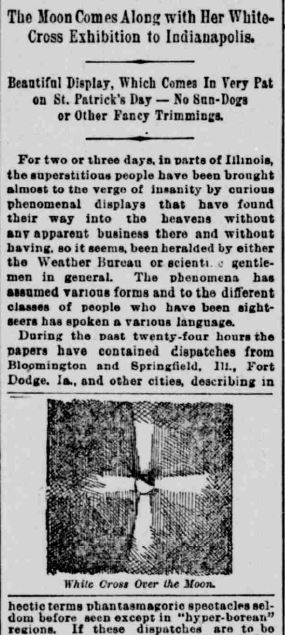In a previous post about “ghoul busters,” I mentioned the body-snatching problem that was a major issue in turn-of-the-century Indianapolis and throughout the U.S. for most of the 1800s. Driven by the need for “fresh material” on dissecting tables at American medical colleges, the longstanding problem of body thievery was widespread and decades-old.
Originally allowed by law to bring only executed felons and the unclaimed poor into the classroom for anatomical study, doctors facing increasing enrollment at nineteenth-century medical schools were forced to prey on ordinary citizens even after “Anatomy Acts” made legal acquisition easier. Though such data hardly show up on the census records, physicians nabbed tens of thousands of bodies from poorly-guarded graves in city and country alike. Tragically, providing bodies for classrooms was a burden that fell disproportionately on African Americans, who play into American medical history both as the robbers and the robbed, the main instruments and victims of grave robbery and desecration into the 1940s.
Ghouls (grave robbers in 19th-century speak) often ignited civil disturbances, like the “Anatomy Riots” that rocked New York City in 1788. (Twenty people were killed on that occasion.) An English robber kept a laconic but harrowing record of his thefts in 1811-12, published in 1896 as The Diary of a Resurrectionist. Often overlooked as a cause of violence on both sides of the Atlantic, the ghouls supposedly unearthed many of the specters that still haunt America.
Indiana was no stranger to this mostly forgotten practice. In the 1860s, well-substantiated fears of the “Resurrection Man” led to the creation of Indianapolis’ Crown Hill Cemetery, now one of the largest in the U.S., designed partly to ward off desecration of the dead by needy medical faculties. Staffed by pistol-toting guards at the turn of the century, Crown Hill ensured that families would no longer have to stand watch over their loved ones’ final resting place until decomposition rendered the remains useless to science.
Further digging into Hoosier newspapers turns up a vast trove of journalism and folklore on this bizarre aspect of medical history. One of the wilder and more entertaining tales from the heyday of the “resurrectionists” comes from Andrew Jackson Grayson, a veteran newspaperman of Madison, Indiana, and is set just before the Mexican War.

In the annals of Hoosier journalism, Grayson had a knack for recognizing a good story. Born at Sandcreek in Decatur County in 1838, at age three he moved sixty miles south with his family to the old Ohio river town of Madison. He later described Madison as a “queer old town. . . the Mecca of Indiana, the gem of the Ohio Valley.” In 1861, the 21-year-old enlisted in the 6th Indiana Infantry and fought in the first land battle of the Civil War at Phillipi, Virginia. (While the war was still on, he published a humorous memoir of the regiment’s role in the Virginia campaign.) Mustered out in 1862 due to varicose veins that developed in his left leg after a forced march to Shiloh, he came back to southern Indiana and at age 22, went to work for the Madison Courier. Grayson worked in the printing trade for the rest of his life.
Like the old river town itself, his grave-robber story comes from before the war and is a sort of “crossroads” of Hoosier history. It also taps into a confusing vein of folklore.
Madison had one of the few medical colleges in antebellum Indiana. Consequently, even small towns nearby often had surprisingly qualified (and interesting) doctors. One of the doctors was Charles Schussler, a German immigrant. Educated at the universities of Tübingen and Vienna, he came to New York in 1828, fought in the Texas Revolution, lived in New Orleans for a while, prospected in California during the Gold Rush, then came back east in the early 1850s to set himself up in medical practice in Madison, where he helped found the Madison Medical Institute. (Though the institute went out of existence long ago, the physician’s house is a bed-and-breakfast today.)
For instruction purposes, Schussler often had to steal bodies. According to one story, on a secret grave-robbing operation he and a band of “ghouls” were forced to contend with a “human icicle” they dug up one frigid winter night, probably in a country graveyard. As the frozen body bounced around the wagon while the team sped away from the cemetery, the stiff smashed into Schussler’s foot. The doctor reportedly cried out in agony, then attacked it in a temporary fit of insanity, screaming “Hurt my foot, will you?!”
One of the protagonists of the anonymous doctor’s tale later recorded by Grayson was thought to be with Schussler that night. Part of a trio of fascinating brothers who practiced medicine in southeastern Indiana in the mid-1800s, Dr. John W. Mullen was born to an Irish family in Pennsylvania. Like Schussler, he went to Texas around 1830, where he served as a page to Sam Houston and almost died of yellow fever. Tiring of Texas, Mullen went back to Philadelphia, trained as a doctor at the University of Pennsylvania, then moved to Madison.
Mullen’s elder brother, Alexander, was also a protagonist in Grayson’s story. Born in Ireland in 1813 but raised near Philadelphia, Alexander Mullen ran away from home to join the American Merchant Marine, first training as a doctor on a ship, then at Louisville Medical College in Kentucky. His Irish pioneer family had moved west to Ripley County, Indiana, in the meantime, hence his own move to the Hoosier State around 1840. Alexander served as Prison Physician at the Indiana State Penitentiary in Michigan City, the regimental surgeon of the 35th Indiana Infantry (the “Irish Regiment”) in the Civil War, and finally moved to St. Louis, Missouri, where he died in 1897. In the 1840s, he was practicing medicine in the small town of Napoleon. He also trained country doctors at the nearby Versailles Medical Seminary, which once sat on the courthouse square.
(Irish-born Alexander Mullen, left, gave medical lectures in Versailles. His brother, the pediatrician, soldier, and Irish-American radical B.F. Mullen, right, was also a grave robber.)
The folklore begins to come fast and furious, but around 1846, when Alexander was in his early thirties, his other brother, Bernard Mullen, was either studying medicine or practicing alongside him in Versailles or Napoleon.
If there is anyone who dispels the eerie, Hollywood stock image of a grave robber, it is definitely B.F. Mullen. One of the earliest pediatricians in the Hoosier State, when the Mexican War broke out in 1847, the 22-year-old enlisted in James Henry Lane’s 3rd Indiana Regiment and became the youngest surgeon ever to serve in the U.S. Army, being appointed to that post at the General Hospital in Jalapa, Mexico. (As Grayson’s story will show, Mullen was probably driven into the army to avoid the scandal of being labeled a grave robber back home.) In the 1850s, Mullen, an Irish Catholic, became a vocal opponent of the nativist “Know Nothing” Party, which tried to prevent immigration, especially from Ireland. Acclaimed as an orator, Mullen eventually became active in the Fenian Brotherhood, a fraternal society that was a forerunner to the global Irish Republican Brotherhood whose last leader was Michael Collins.
During the Civil War, B.F. Mullen would serve as Colonel of the 35th Indiana “Irish” Regiment, where his brother Alexander was surgeon. Col. Mullen, former ghoul, led the 35th Indiana into the “Battle Above the Clouds” at Missionary Ridge in Tennessee and helped ward off John Hunt Morgan’s raid on Madison itself. After the war, the colonel practiced medicine in Madison until 1871, then moved to Terre Haute. In January 1879, Mullen was Democratic candidate for Indiana State Librarian, but died of tuberculosis in an Indianapolis hotel a month later.
On to the story.
According to Grayson’s version of the tale in the Indianapolis Journal, Alexander and Bernard Mullen were teaching a medical class at Versailles, probably in 1845. More likely, Bernard was the third student who got entangled with a “posse” at the Cliff Hill Cemetery above Laughery Creek (now Versailles Lake). The other two students were John B. Glass, who may have ended up in Missouri or Colorado, and Jonathan W. Gordon, the eponymous origin of the Versailles landmark called “Gordon’s Leap” since the 1800s. Originally from Pennsylvania, Gordon had come to town in 1844 to practice law. He afterwards fought in the Mexican War, served as a major in the Civil War, entered Hoosier politics, and helped future President Benjamin Harrison get started in the law when Harrison first came to Indianapolis.
But as the story shows, around 1845 the lawyer-doctor was a famous local lawbreaker.
(Major Jonathan W. Gordon, soldier-doctor and occasional “ghoul,” went on to become speaker of the Indiana House, Prosecuting Attorney for Marion County, and the “most prominent criminal lawyer” in the state. He died in 1887 and was buried at Crown Hill. A vintage postcard shows Bluff Springs near the site where Gordon and/or his companion John Glass allegedly jumped to avoid being lynched.)
Though we shouldn’t take the following tale at face value — it probably contains several major factual errors — let’s turn it over to Grayson. The wild story was printed in the Indianapolis Journal on November 17, 1901:
THE ROBBING OF GRAVES
“‘The sensational instances of grave-robbing that have just come to light in Indianapolis remind me of a similar event in which the late Maj. Jonathan W. Gordon figured when he was a young man,” said Andrew J. Grayson, of Madison. “The incident occurred near Versailles in Ripley County, the place made famous in recent years by the lynching of five men simultaneously. [Five “desperadoes” were killed just outside the Cliff Hill Cemetery in 1897 at a spot called “The Hanging Tree.”] Oddly enough, Major Gordon and his companions came near figuring in a lynching bee themselves. They only escaped an untimely and shameful death at the rope’s end by making one of the most thrilling leaps ever attempted by a human being. The spot at which the perilous jump was made by the young men in question is known to this day as ‘Gordon’s Leap.’
“I obtained the full particulars of the grave-robbery in which young Gordon participated from a veteran physician of Madison,” continued Mr. Grayson. “I was sitting in the old doctor’s office one day chatting pleasantly with him when I asked him suddenly if he had not in his long career had some experiences that were of more than passing interest. ‘I have had quite a few,’ he replied, with a smile.
“Upon being pressed to narrate some of his experiences he consented, and the first story he told was that of ‘Gordon’s Leap.’ ‘Nearly fifty years ago,’ said the veteran physician, ‘the town of Madison could boast a medical institute. I was a student in the school, together with a number of other young sprigs that were desirous of receiving their initial instruction in that primitive academy of science.
“‘About that time Jonathan W. Gordon, who afterwards turned to the law and became one of the most brilliant advocates of the Indiana bar, was a medical student. He and a young man named John Glass attended a course of private medical lectures given by Drs. B.F. and A.J. Mullen at their office in the town of Napoleon, not far from Versailles, in which Gordon resided.
“‘Dr. J.W. Mullen, a brother of the Napoleon physicians of the same name, came one summer from a Philadelphia medical college, in which he was taking a course of instruction, to visit his brothers. He met and formed a close friendship with young Gordon. One day he received from Gordon a note saying that a body that would be an excellent subject for dissection had just been buried in the cemetery near Versailles and proposing that the trio, Gordon, Mullen, and Glass, make arrangements to lift the corpse from its resting place. The recipient of the note entered heartily into the ghoulish scheme and arrangements were made to carry it out.
“‘It seemed, however, that a Dr. [William] Anderson of Versailles was suspected of entertaining body-snatching proclivities and the people residing in the vicinity of the cemetery made preparations to give him a warm reception if he should make an attempt to secure the subject in question.
“‘At the appointed time Gordon, Mullen and Glass set out for the lonely burial ground, and when they reached the place they began without hesitation the work of disinterring the coffin containing the coveted body. They had dug clear down to the box and were raining blows on that with a pick in order to force it open when the enraged citizens in ambush descended upon them with a fierce rush. The young fellows knew well that to be caught meant nothing short of lynching. There was but one way of escape.
“‘A few yards away was a precipice about one hundred and twenty feet in height, the top of which looked down upon Laughery Creek. Fully fifty feet of the cliff was a perpendicular wall. To the young men was presented the alternative of dying surely, but disgracefully, at the hands of the mob or of risking a less shameful death and possibly gaining liberty by leaping over the frowning precipice. With Gordon to think was to act. Hurling himself like a cannonball towards the precipice and shouting to his comrades to follow, the daring youth leaped without hesitation over the face of the cliff. Fired by their leader’s amazing courage, Glass and Mullen jumped after him. Down the trio plunged for, it seemed, an interminable length of time, clutching frantically at branches of trees projecting from ledges, until at last they fell in one quivering, panting heap of humanity into a tangled mass of brush at the bottom, which served to prevent them from being instantly killed.
“The leap would have been pronounced suicidal by anyone not under the stress that weighed on these young men. They, however, escaped serious injuries and what was better still, vengeance of the mob. Young Glass sustained a dislocation of an arm, while Gordon and Mullen were simply shaken up and bruised.
“The trio of daredevils were afterward arrested and brought to trial on a charge of grave-robbing, but fortunately made good their escape through the astuteness of Judge Miles Eggleston, father of the famous author [Edward Eggleston], who discovered a flaw in the indictment against the young men. . .”
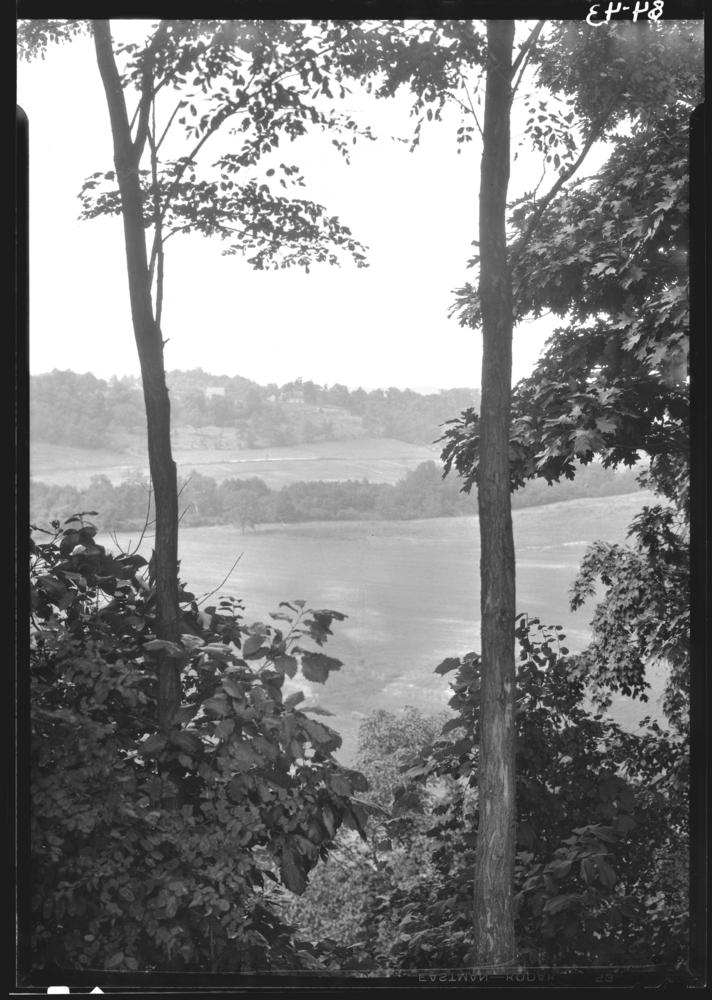 (Gordon’s Leap, Versailles, Indiana, seen on August 21, 1928, by Brown County photographer Frank Hohenberger. Frank M. Hohenberger Photograph Collection, Indiana University.)
(Gordon’s Leap, Versailles, Indiana, seen on August 21, 1928, by Brown County photographer Frank Hohenberger. Frank M. Hohenberger Photograph Collection, Indiana University.)
The doctor’s version of “Gordon’s Leap” that Grayson heard probably had a couple of serious errors. The Mullen brother who accompanied Gordon and Glass to the graveside was almost definitely Bernard, who would have been about twenty if the jump happened in 1845. (Gordon was about twenty-five.) Several sources suggest that both Bernard Mullen and Jonathan Gordon were forced to run away and join the army during the Mexican War due to the fallout from their “ghoulish scheme.”
As long ago as 1884, the truth or falsehood of the leap was hotly debated. On May 15, a piece appeared in the Versailles Republican. The writer said that he had asked Gordon himself about the location of the famous jump:
We asked him if we had been correctly informed as to the locality. As he had visited the spot the day before, he was certain as to the place from which he leaped. But he says he jumped from a tree that stood upon the verge of the bluff and now that tree is not only gone but ten or more feet of the bank is gone. At all events, it was a fearful leap. One of the men, who was with him, also jumped and received severe injuries…
As to the identity of the coveted corpse that night, the Versailles Republican claimed: “A black man had just been buried there, and it was his body the students were after.”
The story of the leap stayed alive in folklore but varied from telling to telling. The location became a famous Ripley County landmark. In 1941, the WPA’s travel guide to Indiana mentioned it. (WPA writers collected a large amount of Hoosier folklore during the Great Depression, though sadly not much of it made it into the WPA guides.) The author makes no mention of any of the Irish Mullen brothers, claiming instead that Gordon and Glass were studying with the Dublin-trained physician Dr. William Anderson — who was, in fact, practicing in Versailles around that time. In the WPA writer’s abbreviated telling, when the lynch mob showed up, Glass escaped through the foliage, while Gordon jumped over the cliff, broke a leg, and dragged himself to a cabin, where he got hold of a horse and fled the county.
More variations are told. Ripley County in Vintage Postcards states that “Glass ran the wrong direction and fell over the precipice.” Alan F. Smith, author of Tales of Versailles, insists that the “leaper” was John Glass. Smith also adds: “Dr. Gordon lost a patient and could not understand why. He was quite interested in performing an autopsy on the body, but the family of the deceased would have nothing to do with the desecration. . . In the darkness, Glass ran over the cliff. . . but, perhaps because Gordon was the dead patient’s doctor, the general public always held the belief that it was he who had jumped.”
Folkorist Ron Baker caught one more elaboration of the tale, which shows up in his classic anthology Hoosier Folk Legends (1982). As someone told Baker: “There was a Dr. Gordon in Versailles. There had been a strange death. Gordon thought an old man’s wife had poisoned him and wanted an autopsy. The family wouldn’t let him. One night real late, he dug up the body. When he got the casket open, the cops and the family came out. Gordon took off running. There’s a 200-250 foot drop cliff at the edge of the cemetery. At the foot of the cliff is Versailles Lake. Gordon fell off and broke a leg. He swam away, and no one ever saw him after that. Now this is called Gordon’s Leap.” (This is certainly false. Versailles Lake, a reservoir, was constructed by damming Laughery Creek in the 1950s.)

Unfortunately, the story wouldn’t be complete without the harrowingly sad coda Grayson appended to it in 1901.
Lest Gordon be considered a hero rather than a grave robber, it’s important to remember that the bodies stolen from rural and urban cemeteries by “resurrection men” were, more often than not, African American. (So were many of the resurrectionists themselves.) White doctors were rarely prosecuted for theft, however, especially if the body was black, whereas African American “ghouls” in their employ often went to court and were sometimes shot and killed by police on the spot.
At one time (1884) the Versailles Republican mentioned that the town’s citizens were considering putting up a monument to Gordon “the leaper.” (In fact, the Ripley County Historical Society erected a historical marker at the Cliff Hill Cemetery in 2013). It is worth noting that no such marker exists to memorialize the thousands of African American bodies robbed from Indiana cemeteries over at least a century.
But I’ll leave it to the doctor from Madison to tell this tale. The date isn’t mentioned, but he claims the event happened before the Civil War:
There is but one authenticated instance of body-snatching in the Madison cemetery, the body taken being that of an old colored man named Taylor. The reason body-snatching was rare in Madison was that we usually got our subjects from rural graveyards. But to return to the Taylor case: A son of the old man was employed as a messenger in the office of Dr. H., in Madison, and after his father died the lad suspected his employer of having stolen the remains. This suspicion, I remember, was aroused by a remark the youth overheard Dr. H. make. The poor boy suffered intensely from his suspicions of his employer, for in those days a negro’s word was worthless against that of a white.
One day, when the doctor was out of his office, the boy decided to put into effect a plan he had evolved. He knew that the doctor had in his closet a skeleton that he used for purposes of study and demonstration. He also knew that his father, when living, had struck himself on the ankle bone with an ax, chipping off a piece of the bone.
Gaining entrance to the closet, the youth peered long and earnestly at the grewsome object suspended therein. Oddly enough one ankle bone of the skeleton had had a piece chipped from it. To the mind of the imaginative young darky the skeleton of his father, as he verily believed it to be, seemed to curse the ruthless hand that had dragged it from its peaceful place in the City of the Dead.
Years rolled by and the doctor disappeared from our midst, entering the Confederate army and becoming a surgeon in the Civil War. The colored office boy grew to manhood, married and had offspring gathered about him. Death visited his little home one day and took from him one of the little ones. The hideous vision he had had in the doctor’s office before came back to him suddenly and with wonderful distinctness. Here was his opportunity to satisfy himself as to the truth of his surmise formed at that time. Accordingly he requested the sexton of the cemetery to permit the body of the child to be buried in the grave of its grandfather. The official assented and the old grave was re-opened. When the bottom was reached there was found, true to the long-entertained belief, the remnants of a coffin, but no trace of the body it once contained.


